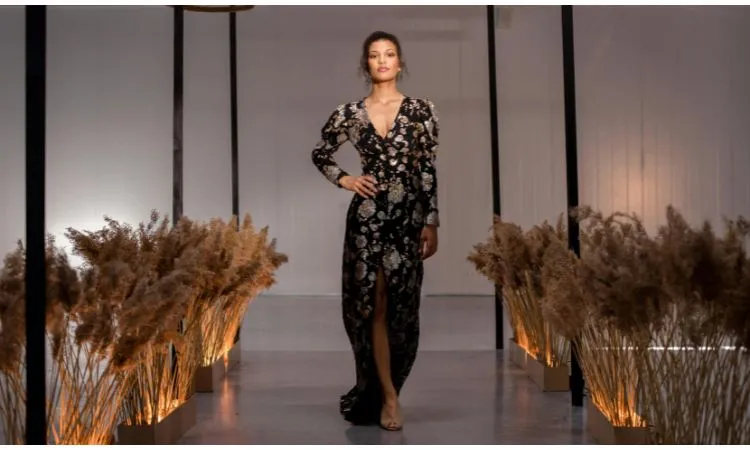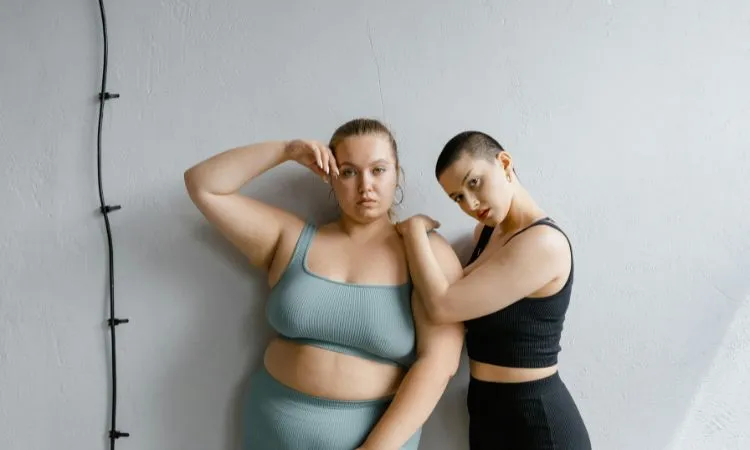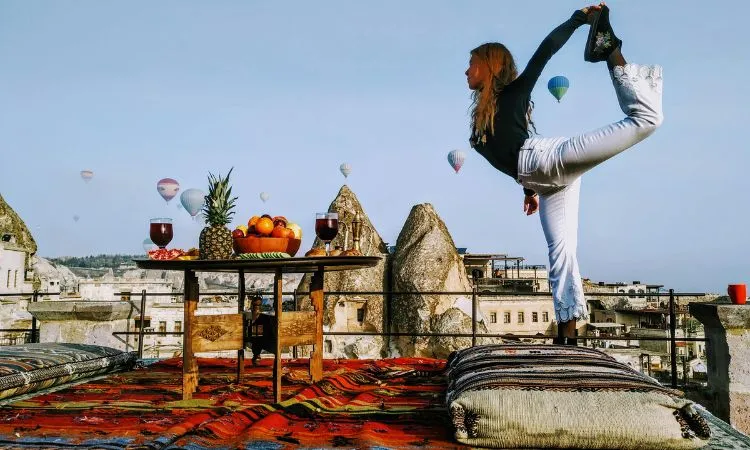Best Runway Models: Supermodels 2024

A runway model is a person who walks the catwalk to display clothing and accessories during a fashion show. These models are crucial in the fashion industry as they bring life to the designs, showcasing them to buyers, the media, and the public. By walking the runway, models help designers and brands make an impact, influencing trends and shaping the future of fashion.
History of Runway Modeling
Early Beginnings
The concept of runway modeling began in the late 19th century with Charles Frederick Worth, known as the father of haute couture. He was the first to use live models, called “mannequins,” to showcase his designs in Paris. This marked the beginning of the runway as we know it today.
Evolution Through the Decades
Runway modeling evolved significantly over the decades. In the 1940s and 1950s, fashion shows became more theatrical, with models adopting more dramatic poses and expressions. By the 1980s and 1990s, supermodels like Naomi Campbell and Cindy Crawford dominated the scene, bringing a new level of fame and glamour to the profession. Today, technology and social media have transformed runway shows into global events, accessible to millions worldwide.
Key Milestones in Runway Fashion
Some key milestones include the rise of the supermodel era in the 1990s, where models became household names, and the increasing diversity in the 2000s, with more inclusion of models of different sizes, ethnicities, and genders. Events like the annual Victoria’s Secret Fashion Show also played a significant role in popularizing runway modeling.
Requirements to Become a Runway Model
Physical Requirements
Runway models typically need to meet specific physical criteria. The industry standard height for female models is between 5’9″ and 6’0″, with a slim build. Male models usually range from 6’0″ to 6’2″ in height. A well-proportioned body and good posture are essential.
Skill Set and Training
Becoming a successful runway model requires more than just looks. Models need to master the art of walking the runway, posing, and expressing different emotions. Training often involves practicing the runway walk, learning to work with various types of clothing, and understanding how to highlight the designer’s work effectively.
Personality Traits and Professional Attitude
Models must be confident, adaptable, and professional. They need to handle long hours, frequent travel, and sometimes harsh criticism. A positive attitude, strong work ethic, and the ability to work well with others are crucial traits for success in this field.
How to Get Into Runway Modeling
Steps to Start Your Career
A good agency can provide guidance, training, and opportunities. Look for agencies with a solid reputation and avoid those that ask for large upfront fees. Once signed, work closely with your agent to develop your career.
Building a Portfolio
Your portfolio should include a variety of shots, including headshots, full-body images, and different poses. It’s essential to keep it updated with your latest work.
Networking in the Fashion Industry
Networking is vital in the fashion industry. Attend fashion shows, industry events, and parties to meet designers, photographers, and other models. Building relationships can lead to more opportunities.
What to Know About Being a Runway Model
Day-to-Day Responsibilities
Runway models spend their days attending castings, fittings, and rehearsals. They also participate in photoshoots and promotional events, where backstage preparations are crucial. During fashion weeks, their schedules become even busier with back-to-back shows.
Working Conditions and Environment
Models often work in high-pressure environments. Fashion shows can be chaotic, with quick changes and tight schedules. Despite the glamorous exterior, the job can be physically and mentally demanding.
Challenges and Misconceptions
Many people think modeling is an easy job, but it comes with its challenges. Models face competition, rejection, and the pressure to maintain their appearance, especially when preparing for male runway shows. It’s a demanding career that requires dedication and resilience, especially for female runway models who face intense scrutiny.
Famous Runway Models

Pioneers and Legends
Models like Twiggy and Jean Shrimpton paved the way in the 1960s. They brought a new look and style to the industry, influencing fashion trends worldwide.
Supermodels of the 1990s
The 1990s saw the rise of supermodels like Naomi Campbell, Cindy Crawford, and Linda Evangelista. These models became celebrities, appearing in music videos, movies, and advertisements, and setting new standards in the modeling world.
Today’s Leading Runway Models
Today’s top models include Kendall Jenner, Gigi Hadid, and Bella Hadid. They have redefined modeling with their strong social media presence and influential roles in fashion.
Iconic Moments and Contributions
Iconic moments in runway history include Naomi Campbell’s famous fall in Vivienne Westwood’s platform heels and Kate Moss’s debut as the face of the “heroin chic” look of the 1990s. These moments have left a lasting impact on fashion.
Earnings and Demographics
How Much Runway Models Make
Earnings vary widely in the modeling industry. Top runway models can earn millions of dollars annually through runway shows, endorsements, and other projects. However, many models earn more modest incomes, especially at the beginning of their careers.
Factors Affecting Earnings
Factors such as experience, reputation, and the ability to secure high-profile gigs influence earnings. Models with strong social media followings often command higher fees due to their promotional power.
Demographic Trends in the Industry
The industry is becoming more inclusive, with greater representation of different sizes, ages, and ethnicities in both male and female runway models. This trend reflects a broader societal push for diversity and inclusion.
Latest Trends and News in Runway Modeling
Current Fashion Trends and Influences
Recent trends include sustainable fashion, gender-neutral clothing, and a focus on body positivity. These trends are shaping the designs showcased on runways around the world, with credits automatically updated based on each model’s performance. The true domain of models is evolving, as campaigns may be overrun with these new themes.
Highlight on Recent Runway Shows and Events
Recent events like Paris Fashion Week and the Met Gala have featured standout moments from models walking the runway, such as Emily Ratajkowski, Kendall Jenner, and Naomi Campbell. These shows highlight the latest trends and the top talents in the industry. In many fashion circles, primarily models with a certain height requirement are selected to walk in these prestigious shows.
Notable Appearances and Style Statements
Models are not just walking the runway; they are making statements. For example, Bella Hadid has been noted for wearing a keffiyeh dress to express her Palestinian heritage, and Cara Delevingne brought back the conical bra in Paris. The influence of a fashion designer can be seen in these bold choices.
Emerging Models and Fresh Faces
New talents like Georgia May Jagger and Ashley Graham are making waves in the industry, bringing fresh looks and perspectives to the runway. Show casting are considered pivotal in introducing these fresh faces, and models always dominate the spotlight per show with their unique styles.
Diverse Types of Models in the Fashion Industry
Plus-Size Models

Plus-size models like Ashley Graham are breaking barriers and promoting body positivity, showing that beauty comes in all shapes and sizes. These models are challenging the traditional standards of beauty in the fashion industry and helping to redefine what it means to be attractive. By showcasing curvier figures and promoting self-love and acceptance, they are empowering women of all sizes to feel confident and comfortable in their own skin.
The rise of plus-size models in the fashion world has also led to more diversity in advertising campaigns, runway shows, and magazine spreads. This increased representation is not only important for promoting body positivity, but also for ensuring that people of all sizes feel included and represented in the fashion industry.
Petite Models
Petite models, although less common on the runway, are gaining recognition. Designers are increasingly catering to different body types. These models typically stand at 5’7″ and under, with many falling in the 5’2″ to 5’5″ range. Their smaller stature allows them to showcase clothing in a unique way, as garments often fit them differently than taller models.
Despite the industry’s historical preference for taller models, petite models are now being embraced by runway models fashion brands and designers who want to showcase their designs on a more diverse range of bodies. This not only challenges traditional beauty standards but also allows for greater representation within the fashion industry.
In recent years, petite models have been seen walking the runways of major fashion weeks, as well as in advertising campaigns and editorials. They bring a fresh perspective to the industry, proving that beauty comes in all shapes and sizes.
Black Models
Black models have been instrumental in bringing diversity to the runway. Icons like Naomi Campbell and new stars like Adut Akech continue to inspire. Black models have faced challenges in the fashion industry, with issues such as lack of representation, discrimination, and tokenism. However, their perseverance and talent have paved the way for more inclusivity in the industry.
Naomi Campbell, often referred to as the “Queen of the Catwalk,” broke barriers as one of the first black models to achieve international supermodel status. Her fierce presence on the runway and in campaigns for major fashion houses like Versace and Chanel helped to redefine beauty standards and pave the way for future generations of black models.
Adut Akech, a rising star in the modeling world, has quickly made a name for herself with her striking beauty and powerful presence. She has walked for top designers like Christian Dior and Alexander McQueen, and has graced the covers of esteemed fashion magazines like Vogue.
Black models continue to make waves in the industry, challenging traditional beauty norms and pushing for greater diversity and representation. With their talent and influence, they are helping to create a more inclusive and diverse fashion landscape for future generations of runway models.
Alternative Models
Alternative models with unique looks and styles are becoming more popular, reflecting a broader acceptance of different forms of beauty. One alternative model style that has been gaining traction in recent years is the “punk” or “rockabilly” look. This includes edgy, rebellious clothing and hairstyles, often incorporating elements such as leather, studs, and bold, vibrant colors. These models exude a fierce, unapologetic attitude that challenges traditional notions of beauty.
Another popular alternative model style is the “grunge” or “alternative” look, which embraces a more laid-back, effortless aesthetic. These models typically sport unkempt hair, tattoos, and piercings, and favor clothing that is comfortable and slightly disheveled. This look has a cool, nonchalant vibe that appeals to those who appreciate a more casual and understated approach to fashion.
Fitness Models
Fitness models focus on promoting health and athleticism, often working in sportswear and activewear shows. They typically have well-defined muscles, low body fat percentages, and a strong overall physique. Fitness models often work as spokespeople for health and fitness brands, appearing in advertisements and promotional materials to showcase their physical prowess and inspire others to lead active lifestyles.
Fitness models also frequently participate in fitness competitions and events, showcasing their strength, agility, and endurance, often featured in models.com’s runway section. They may have backgrounds in athletic training, bodybuilding, or other physical fitness disciplines, and are often passionate about promoting physical and mental well-being.
Commercial Models
Commercial models work in advertisements and promotions, showing that modeling isn’t limited to the runway.
Mature Models
Mature models are proving that age is just a number and are breaking stereotypes by showcasing that beauty and style have no expiration date. They are gaining recognition in the fashion industry and proving that diversity knows no bounds.
Instagram and Influencer Fashion Models
Social media has given rise to a new type of model. Influencers like Kendall Jenner have massive followings and significant impact, often collaborating with top fashion brands.
Plus Size Models
Plus size models are breaking boundaries in the fashion industry, challenging traditional beauty standards and promoting body positivity.
Transgender Models
Transgender models are making waves in the industry, representing gender diversity and inclusion on runways and in campaigns.
Diverse Models
Diverse models of various ethnicities, ages, and sizes are finally getting the recognition they deserve, showcasing the beauty in authenticity and uniqueness.
Male Models
Male models have also been making waves in the industry, challenging stereotypes and proving that fashion is for everyone.
Overall, the modeling industry is becoming more inclusive and diverse, embracing different types of beauty and identities. Models of all backgrounds are breaking barriers and changing the face of fashion for the better.
Conclusion
The Future of Runway Modeling
The future of runway modeling looks promising with increasing diversity and the integration of technology. Virtual fashion shows and digital influencers are likely to become more common.
How the Industry is Changing
The industry is shifting towards more inclusivity and sustainability. Designers and brands are more conscious of their social and environmental impact.
Final Thoughts on Pursuing a Career in Runway Modeling
For those aspiring to become runway models, it’s essential to understand the industry’s demands and opportunities. With dedication, the right guidance, and a strong work ethic, a successful career in runway modeling is within reach.






